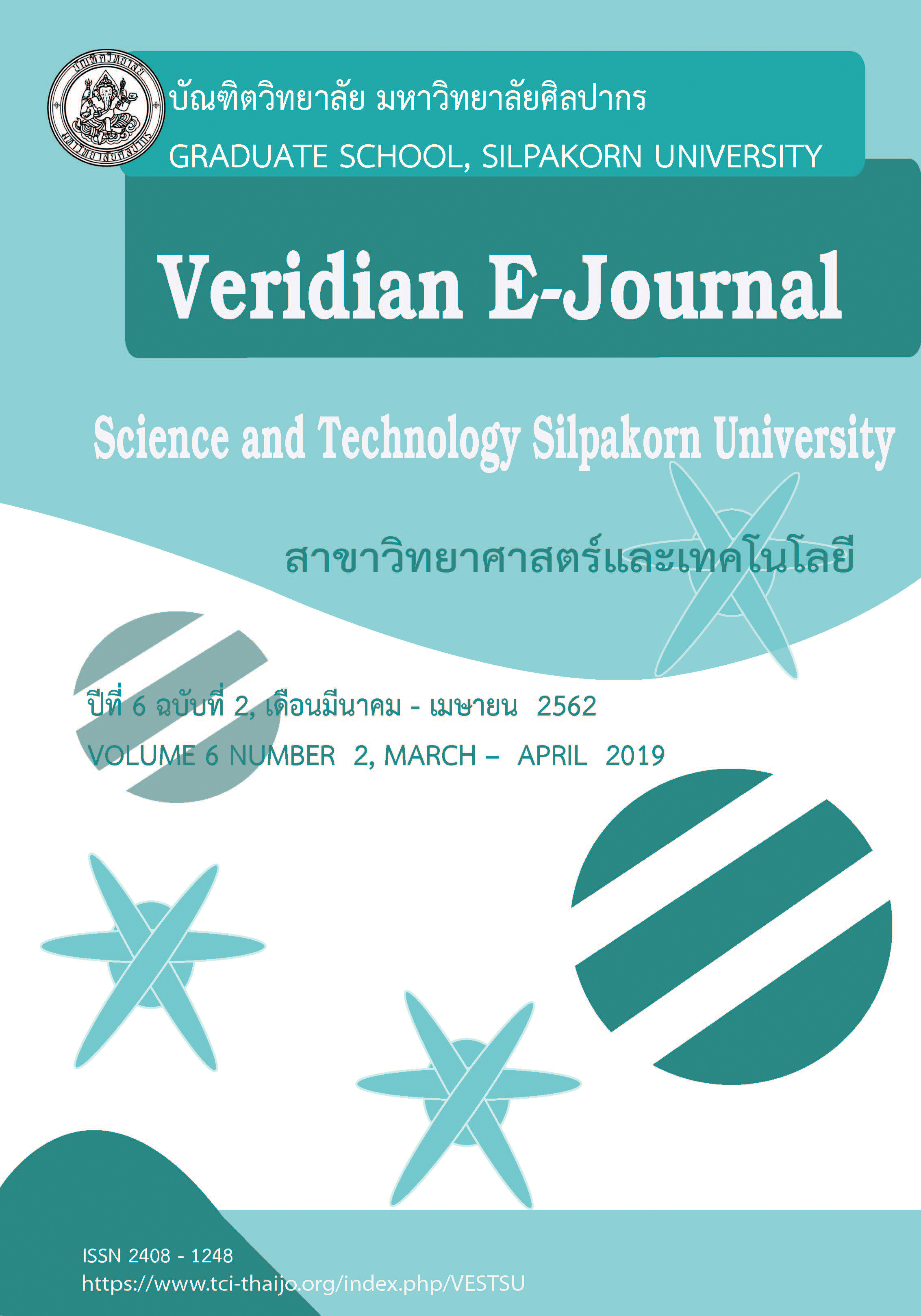ประสิทธิภาพของ Bacillus spp. จากดินจอมปลวกในการต้านรา Pestalotiopsis sp. สาเหตุของโรคผลเน่าในฝรั่ง (Efficiency of Bacillus spp. from ant-hill soils against Pestalotiopsis sp. causing fruit rot disease in guava)
Main Article Content
Abstract
โรคผลเน่าของฝรั่งจัดเป็นปัญหาที่พบมากในฝรั่งหลังการเก็บเกี่ยว โรคนี้มีสาเหตุที่สำคัญมาจากรา ก่อโรค ในการศึกษานี้ได้แยกราที่เป็นสาเหตุโรคผลเน่าในฝรั่งและจัดจำแนกในระดับสกุลพบว่าคือรา Pestalotiopsis sp. ในการศึกษานี้ได้แยกแบคทีเรียปฏิปักษ์มาจากดินจอมปลวกจำนวน 7 ตัวอย่าง จากการศึกษาพบว่ามีแบคทีเรียจำนวน 18 ไอโซเลตจากทั้งหมด 39 ไอโซเลตที่มีประสิทธิภาพในการยับยั้งราก่อโรค Pestalotiopsis sp. โดยมีประสิทธิภาพในการยับยั้งราสาเหตุโรคผลเน่าที่ร้อยละของการยับยั้งอยู่ระหว่าง 8.69 ถึง 72.38 ไอโซเลตที่มีประสิทธิภาพในการยับยั้งราก่อโรค Pestalotiopsis sp. สูงที่สุดคือไอโซเลต SP20 ที่ร้อยละการยับยั้งที่ 72.4 การจำแนกแบคทีเรียบนพื้นฐานของลักษณะทางสัณฐานวิทยาของเซลล์และลำดับ 16S rDNA ของไอโซเลต SP20 และความสัมพันธ์ใน phylogenetic tree พบว่ามีความใกล้เคียงกับ Bacillus subtilis ที่ความเหมือนร้อยละ 99.93 โดยจากผลการทดลองนี้สรุปได้ว่าเชื้อ B. subtilis SP20 มีศักยภาพที่จะพัฒนาเพื่อใช้เป็นสารชีวภาพในการยับยั้งราก่อโรคในผลเน่าในฝรั่งหลังการเก็บเกี่ยวต่อไป
Fruit rot disease is the main problem of post-harvest guava. This disease has importantly caused by pathogenic fungi. In this study, fungi causing fruit rot disease in guava were isolated and identified as Pestalotiopsis sp. In this study, antagonistic bacterial strains were isolated from seven samples of termite hill soil. It was found that a total of 18 isolates out of 39 isolates showed inhibitory activity against Pestalotiopsis sp. The percent inhibition of fungal growth was 8.69%-72.38%. Among these isolates, SP20 showed the highest inhibitory activity against Pestalotiopsis sp. at 72.38%. Bacterial identification based on cell morphology and 16S rDNA sequence and relative with phylogenetic tree revealed that the isolate SP20 was closely related to Bacillus subtilis at 99.93% similarity. From these results, it can be concluded that B. subtilis SP20 had the potential to be developed for using as a biological agent for inhibition of fruit rot disease in post-harvest guava.

